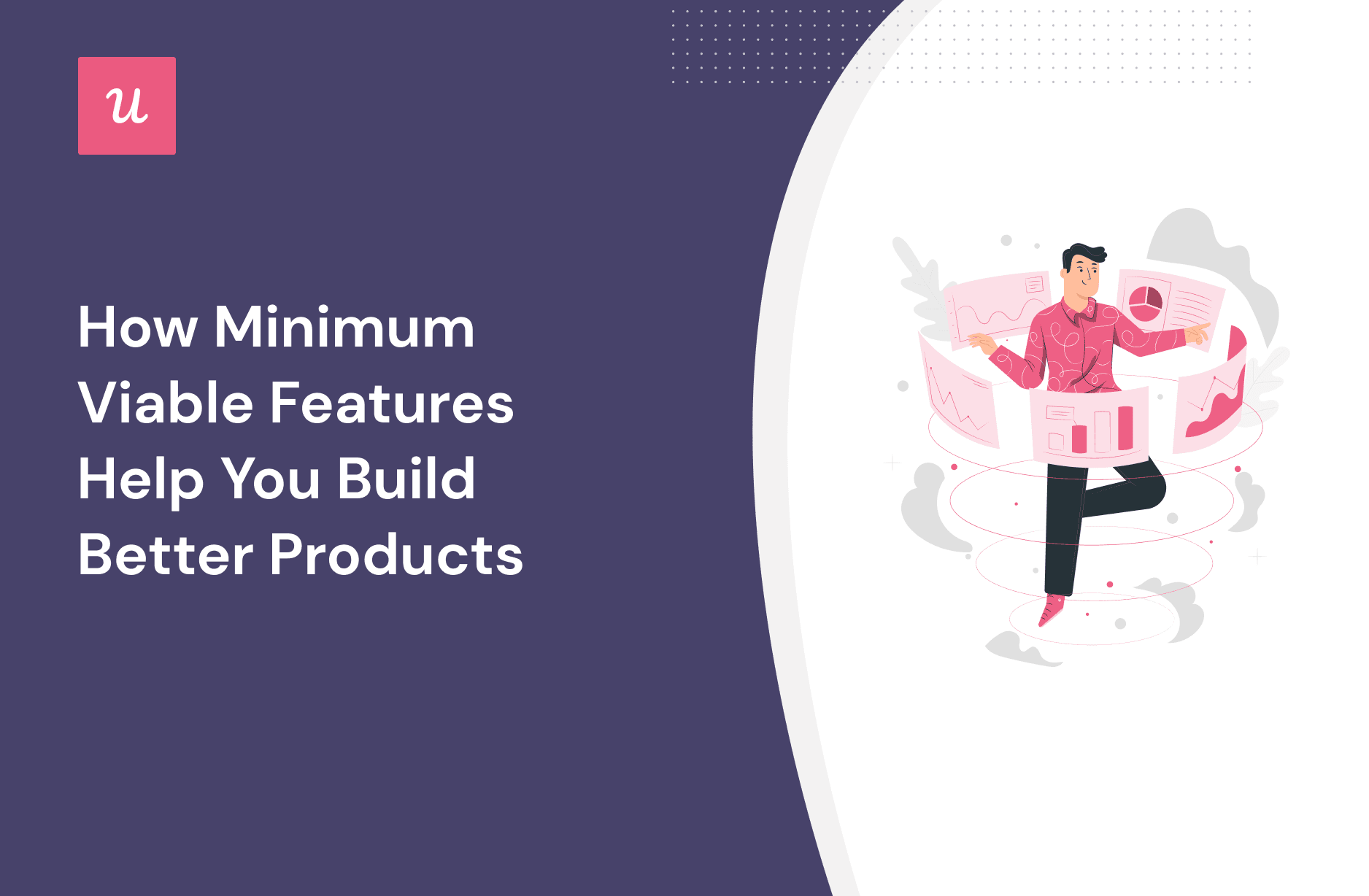
You’re probably familiar with the concept of a minimum viable product: but minimum viable features are an equally powerful idea.
In this article, we’re going to explain the difference between a minimum viable product and a minimum viable feature, why they’re a useful concept for product managers, how they’re helpful for identifying improvement opportunities, and tactics for how you can use them in your own product,
Ready to get started? Let’s dive straight into it!
How do you currently test the potential of new features before full development?
Focusing on minimum viable features helps avoid wasted engineering hours by validating ideas directly with users.
Try Userpilot Now
See Why 1,000+ Teams Choose Userpilot

Overview of minimum viable features
- A minimum viable feature (or MVF) is the smallest functional ‘slice’ of operability for a given feature. The idea comes from the world of startups, where speed of learning and adaptation are critical to survival.
- So how does a minimal viable feature differ from the concept of ‘minimum viable products? An MVP helps you define your complete product strategy. An MVF approach helps you test specific ideas (you can think of them as a type of ‘experimental feature’).
- Building and launching minimum viable features is one of the most powerful product decisions you can take: primarily, they help you determine a feature’s usefulness.
- Launching a minimum viable feature can help you rapidly test, iterate and accelerate the new feature development, avoid wasted engineering hours with non-viable features, and prioritize your roadmap based on data – not assumptions.
- What should you consider when building a minimum viable feature? Let’s consider some of the best practices: above all else, an MVF should be simple. That means no bells and whistles, and a ruthless focus on core functionality.
- You can also adopt a ‘low effort’ version of an MVF by using fake door tests. They can be an extremely effective way of gauging interest and helping determine if something is deemed desirable by your customers.
- You should also consider who you want to test your MVF toward. If you fail to define and target your audience correctly, you run the risk of failing to gather the valuable data you’re after (and dooming your experiment to failure).
- Users are an insightful bunch, and you and your team should try to gather a range of data to make better product decisions: quantitative (analytics, usage data, satisfaction scores, click rates, heatmaps) and qualitative (understand the ‘why’ with feedback forms, interviews, and focus groups).
- Here’s another tip: to get the most out of the MVF approach, you need to think way past just pushing a feature into production. You’ll start to get real value once it’s delivered and you can observe how it’s landing with your users.
- And finally, remember: all feedback is good feedback (even if it’s negative). It might hurt to hear customers slam a feature – or completely ignore it. But ultimately it is all going to help you and your team make better decisions.
What are the minimum viable features (MVF)?
A minimum viable feature (or MVF) is the smallest functional ‘slice’ of operability for a given feature. That means it works – nobody wants to ship a broken feature – but it’s completely stripped back, with no bells and whistles.
If you think about an email app, for example, a minimum viable feature might be a way to compose messages with no ability to format your text, upload images, or integrations with third-party software. Just enough functionality to do the job.
The idea comes from the world of startups, where speed of learning and adaptation are critical to survival. Minimum viable features help organizations move quickly, learn about their market and make effective decisions.
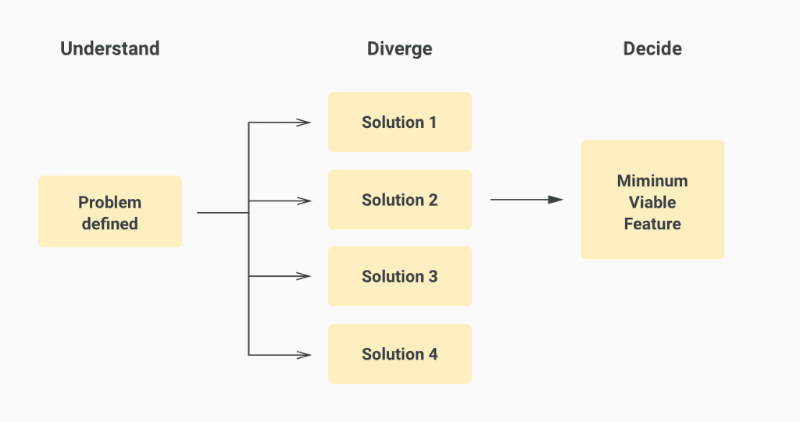
Minimum viable feature (MVF) vs minimum viable product (MVP)
You’re probably familiar with the concept of a ‘minimum viable product’ (or MVP). Still, it’s worth expanding on the subtle differences between these concepts:
- An MVP helps you define your product strategy. You’re creating the thinnest possible slice of your entire product or service (i.e. from sign-up onwards). As you might imagine, that requires more time and effort than picking an individual feature.
- An MVF approach helps you test specific ideas. They’re developed with exactly the same methodology as an MVP, but are far more focused. You can think of them as a type of ‘experimental feature’ that helps you figure out how things are going to land with your end customers.
Why should product managers adopt the minimum viable features concept?
Any savvy product manager will tell you that the more (and better quality) data they have, the better the quality of their decisions – and the greater the chance of product success.
Building and launching minimum viable features is one of the most potent product decisions you can take – for a number of reasons.
We’ll explore some of them in more detail below – but in a nutshell, it’s all about gathering real user-experience data and identifying improvement opportunities (without the risk of launching a whole product).
Rapidly test and iterate on new feature development
“If a picture is worth a thousand words, a prototype is worth a thousand meetings.”
First and foremost, MVFs help you build a picture of whether a potential feature has real value to your end customers.
You can quickly go from user interviews or other research to generating functional prototypes at pace. The sooner you ship a feature, the more you’ll be able to iterate (and the greater value it’ll deliver).
Avoid wasted engineering hours with non-viable features
One of the most painful costs in the SaaS world is opportunity cost: how else could you be spending your time and effort?
MVFs help save huge amounts of wasted engineering hours by quickly validating an idea directly with your users.
Based on how it performs, you’ll be able to tell near instantly whether something has legs, or whether you should abandon it and focus your efforts on something else.
Prioritize product roadmap based on data not assumptions
Pivotal to the success of any product or service is a strong product vision. High-performing product teams work toward a prioritized roadmap that sets out a strategy for delivering consistent value.
MVFs help you quickly gather feedback and test ideas before making costly bets. You can treat roadmap initiatives as hypotheses to prove or disprove, and over time build up a data-driven roadmap you’ll be confident delivers real value by solving problems for your customers.
Everything you work on should align with your vision, and it should always be clear to your customers exactly what your product is all about. Don’t run the risk of confusing them with mixed messages or unusual features.
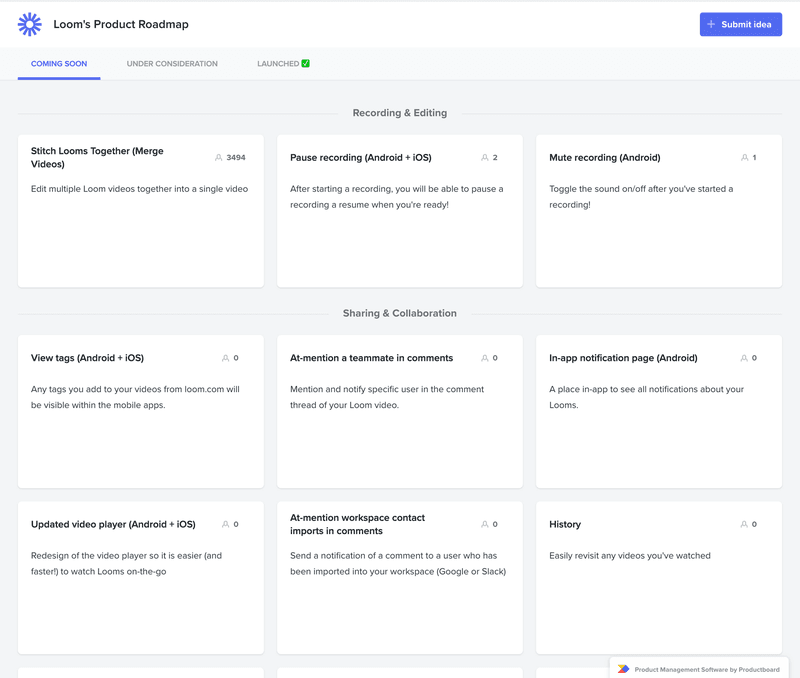
Best practices when building minimum viable features
So far, we’ve covered what MVFs are and why they’re valuable tools for product managers. In this section of the article, we’re going to take it a step further and start to break down specific tactics for adopting an MVF approach in your own SaaS.
A minimum viable feature should be simple
At the core of an MVF should be one word: simplicity.
Instead of perfection, think about speed. If you treat an MVF as a prototype or experiment, rather than something you’ve bet the house on succeeding, you’ll be more likely to make the right product decisions.
That means focusing only on core functionality (i.e. not fancy animations).
Test features usefulness before developing
There’s actually a sneaky way to validate ideas before writing a line of code…
Fake door tests are an extremely effective way of gauging interest and helping determine if something is deemed useful or desirable by your customers.
Based on user response, you’ll be able to figure out if it’s something they actually want and are likely to use (and you can then get to work building a minimum viable version of it).
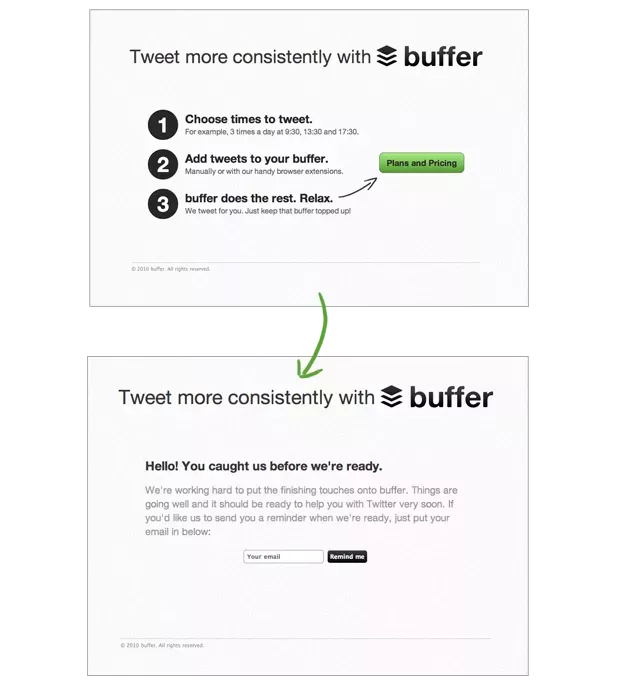
Always test minimum viable features with relevant users
A critical part of building and launching an MVF is defining who you want to test with. If you fail to define and target your audience correctly, you run the risk of failing to gather the valuable data you’re after (and dooming your experiment to failure).
Userpilot offers fine-grained user segmentation, allowing you to test distinct features with relevant user segments.
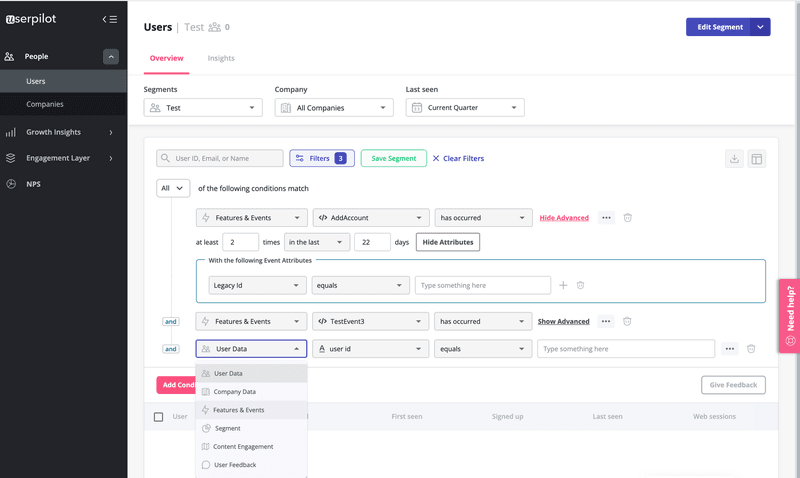
That way, you’ll have confidence you’re making informed decisions based on insight gathered from exactly the audience you intended.
Collect different types of user feedback for better insights
Users are an insightful bunch. There’s a wealth of user experience data you can gather from your customers: to get the best results, don’t limit yourself to one method. You should think about:
- Quantitative: analytics, mobile analytics, usage data, satisfaction scores, click rates, heatmaps, and more.
- Qualitative: understand the ‘why’ with feedback forms, interviews, and focus groups.
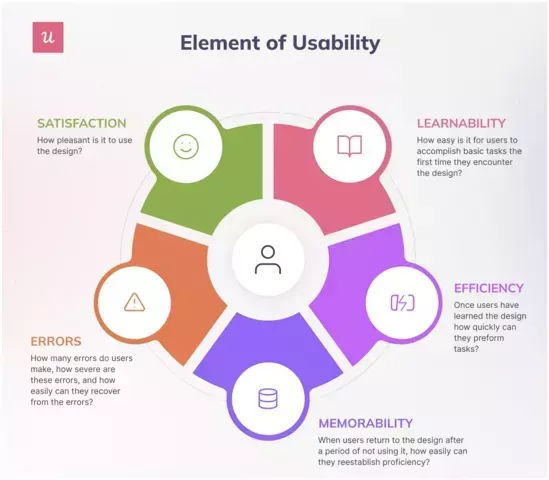
Understand usability after launch
To get the most out of the MVF approach, you need to think past ‘just deliver it’.
The real value is in gathering data once you’ve actually delivered the feature. That’s when you can start to gather information on how customers are getting on with your feature, whether it’s helping them solve their problems, pain points, and more.
Then you can take all of that insight, synthesize it, and determine how you’ll enhance your MVF.
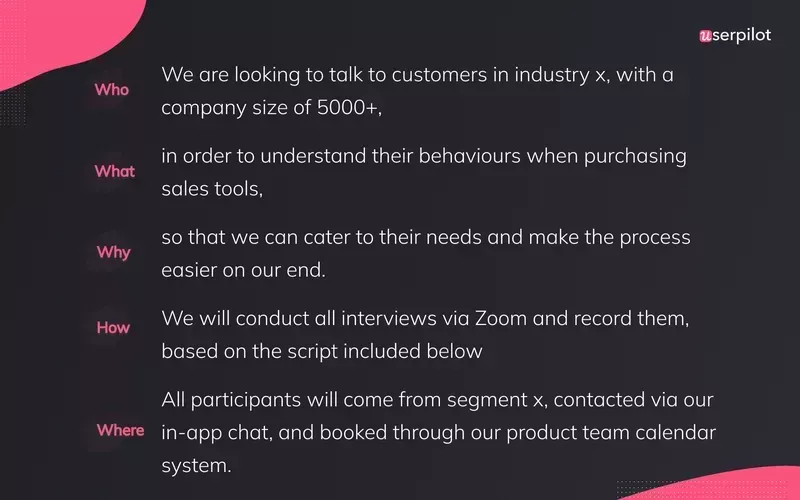
Be prepared to accept negative feedback
Sometimes, you need to be completely ruthless here. The world of product management requires a degree of brutality: you can’t get too attached to your new feature ideas.
Ultimately, you’re just trying to create something that you can get into the wild and test whether it brings value to your users or not.
So remember: all feedback is good feedback (even if it’s negative). It might hurt to hear customers slam a feature, tell you they don’t like it, or completely ignore it.
But it all helps you and your team in the long run.
You can start to focus your efforts in a more suitable direction, learn from your mistakes and make more informed decisions moving forward.
Conclusion
That wraps up our run-through of exactly what a minimum viable feature is and how to make the most of this powerful idea. Use them wisely, and you’ll be able to save effort, delight your users, and carve out space in the competitive SaaS market.
If you and your team want to get started with building minimum viable features, get a Userpilot Demo today – and see how you can craft powerful prototypes quickly and easily.







